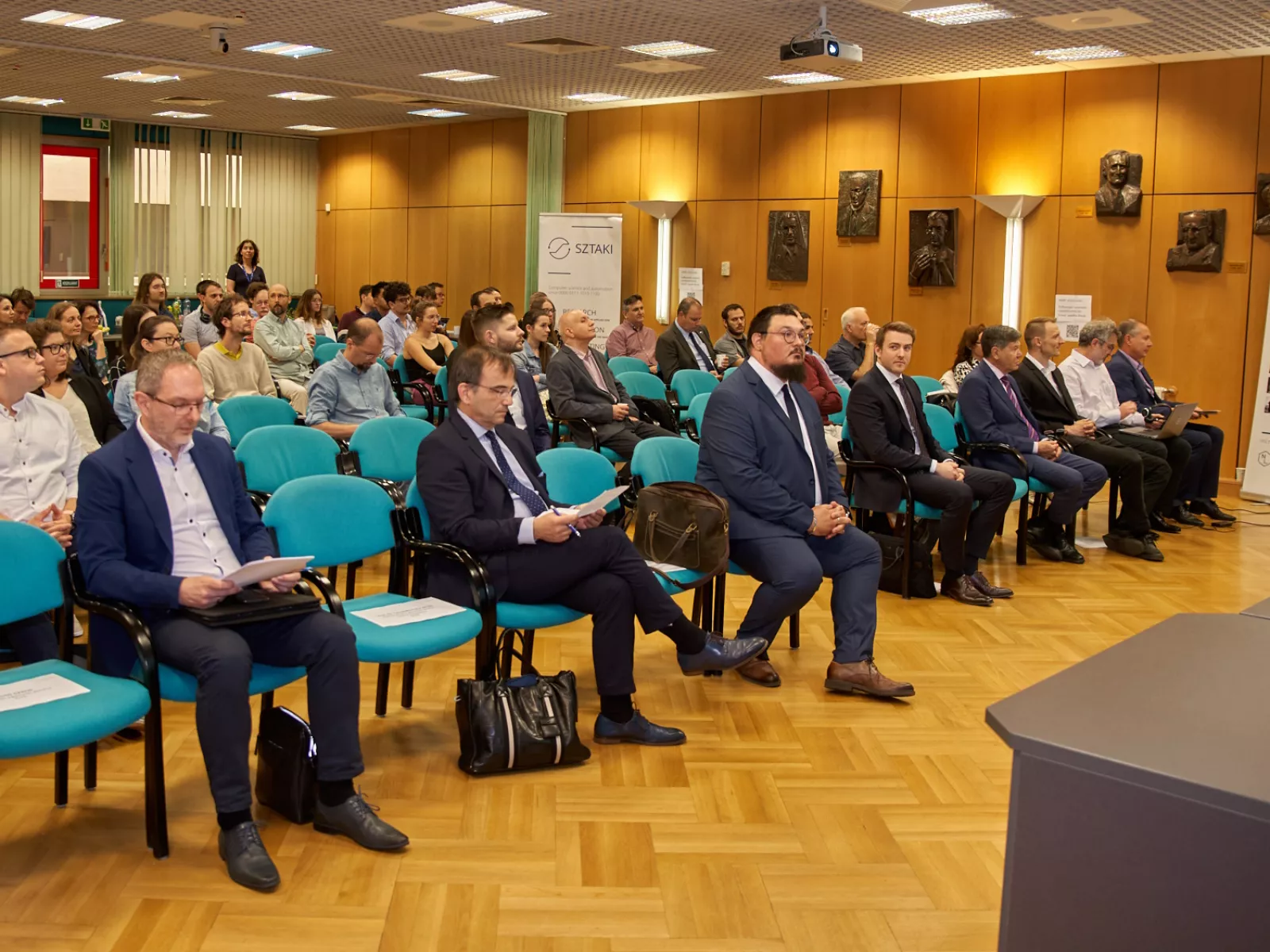
The Artificial Intelligence National Laboratory (MILAB) held its Symposium on June 15, 2023. Attendees were able to participate in person or online and enjoy a full day of technical presentations given by MILAB project researchers, representatives from partner institutions coordinated by MILAB, and experts from other national labs.
The event began with greetings of Prof. Dr. László Monostori, Director of SZTAKI; László Bódis, Deputy State Secretary for Innovation at the Ministry of Culture and Innovation; Szabolcs Szolnoki, Deputy State Secretary for Technology at the Ministry of Economic Development; Dr. László Lengyel, Deputy President for Science and International Affairs at the National Research and Innovation Institute of Hungary; and Dr. András Benczúr, Head of MILAB.
During his welcome speech, László Bódis emphasized that the long-term success of the Hungarian economy depends on innovation and knowledge,
which need to be further strengthened amidst economic challenges caused by the war and the energy crisis. This aligns with Hungary's new
innovation strategy, the Neumann János Programme (NJP), which aims to enhance the knowledge economy and foster collaboration between
universities, research institutions, and the economy.
At the Symposium, MILAB's sub-projects presented their most significant recent achievements. Researchers from Semmelweis University, Eötvös
University, Budapest University of Technology and Economics, Szeged University, Institute for Social Sciences, Rényi Institute, and SZTAKI
showcased their research topics and results.
MILAB consists of six sub-projects, namely: mathematical foundations of AI, machine vision, language processing, health, industrial IoT, and
security. The results presented covered a range of topics and solutions, including:
- Application of ChatGPT in software development.
- Investigation of the learning and generalization capabilities of
- deep learning models and performance guarantees.
- Determination of occluded objects' invisible parts.
- Identification of escape routes in disaster situations based on drone imagery.
- Hungarian language processing software toolkit.
- Sentiment analysis of economic texts to determine positive or negative expectations.
- Modeling the severity of heart attacks and the risk of schizophrenia.
- Testing of sensor-equipped bridge structures.
- Robotic task performance using reinforcement learning.
- Vulnerability testing of AI software.
The event also featured presentations from partner national laboratories, beginning with the National Laboratory for Health
Security, followed by the National Laboratory for Infocommunications and Information Technology, and the National Laboratory for Digital Heritage.